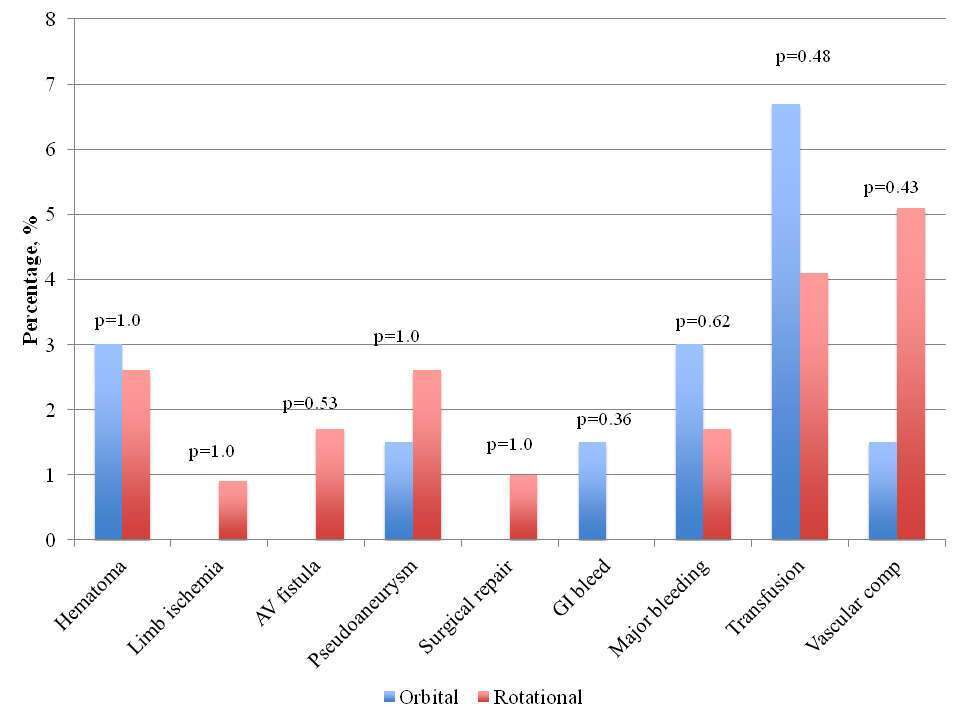
Comparison of the Efficacy and Safety of Orbital and Rotational Atherectomy in Calcified Narrowings in Patients Undergoing Percutaneous Coronary Intervention
Introduction: Treatment of calcified coronary lesions is challenging and has higher of complications compared with non-calcified lesions. We aimed to compare the safety and efficacy of rotational and orbital atherectomy (RA and OA) during percutaneous coronary intervention (PCI) among all-comer population with severely calcified lesions.
Methods: We included all patients undergoing PCI with OA or RA in our institution from October 2013 until October 2016. Comparison of baseline and procedural characteristics along with acute complications rates and postprocedural cardiac enzyme elevation was performed.
Results: There were 191 RA and 57 OA patients. Other than creatinine clearance, which was lower in patients with OA (p=0.01), there were no differences in baseline characteristics. OA was more frequent in left anterior descending (LAD) artery lesions (p=0.02), while RA was more common in right coronary artery (RCA) lesions (p=0.01). Intracoronary imaging rates were above 60% in both groups. There was a higher rate of coronary dissections with OA compared with RA (p=0.003), but there was no difference in periprocedural events. Maximal troponin levels were similar among both groups. Residual stenosis measured by intravascular ultrasound in 29 patients revealed no significant differences between OA and RA (p=0.58).
Conclusions: RA and OA have similar safety and efficacy profiles in treating calcified coronary lesions, and intracoronary imaging is highly beneficial to identify coronary injury following atherectomy procedures.

Powered by Eventact EMS